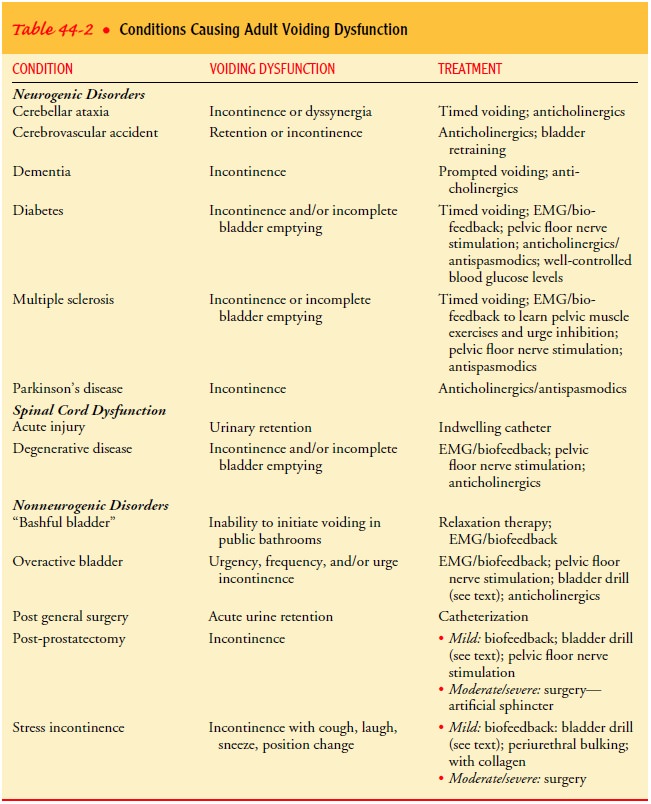Chapter: Medical Surgical Nursing: Management of Patients With Upper or Lower Urinary Tract Dysfunction
Congenital and Adult Voiding Dysfunction
CONGENITAL VOIDING DYSFUNCTION
Congenital
anomalies usually result in voiding dysfunction early in life and are usually
partially or completely surgically corrected. When voiding dysfunction occurs
in adults, it may affect only the lower urinary system (eg, the bladder and
urethra); when voiding dysfunction occurs in children, it commonly involves
damage to the upper urinary system (ie, the ureters and kidneys) as well. Many
congenital anomalies are discovered early in utero because of prenatal care
measures such as ultrasound. The urinary system begins developing days after
conception, and anomalies can be seen on a sonogram as early as 20 weeks. Depending
on the anomaly, intrauterine surgery may be performed on the fetus. Be-cause
the urinary system may be only one of several organ systems that are abnormal
due to genetic disorders, any defects not noted during gestation should be
immediately apparent at birth. Such anomalies include renal agenesis (complete
absence of one or both kidneys), ectopic ureter, and Eagle-Barrett syndrome
(also known as prune-belly syndrome), with exstrophy of the bladder. On the
other hand, voiding dysfunction can be discovered insid-iously (for example,
during toilet training). At times congenital anomalies, such as posterior
urethral valves, typically seen only in males, may escape detection until early
adolescence or adulthood, when the voiding dysfunction or its sequelae cause
the individual to seek a urologic evaluation. Although pediatric in nature,
these disorders may affect urinary tract function when the patient be-comes an
adult.
ADULT VOIDING DYSFUNCTION
Both neurogenic and non-neurogenic disorders can cause adult voiding dysfunction (Table 44-2). The micturition (voiding) process involves several highly coordinated neurologic responses that mediate bladder function. A functional urinary system allows for appropriate bladder filling and complete bladder emptying. If voiding dysfunction goes undetected and untreated, the upper urinary system may be compromised.

Chronic incomplete bladder
emptying from poor detrusor pressure results in recurrent bladder infection.
Incomplete bladder emptying due to bladder outlet obstruction (such as benign
prostatic hyperplasia), causing high-pressure detrusor contractions, can result
in hydro-nephrosis from the high detrusor pressure that radiates up the ureters
to the renal pelves.
Related Topics